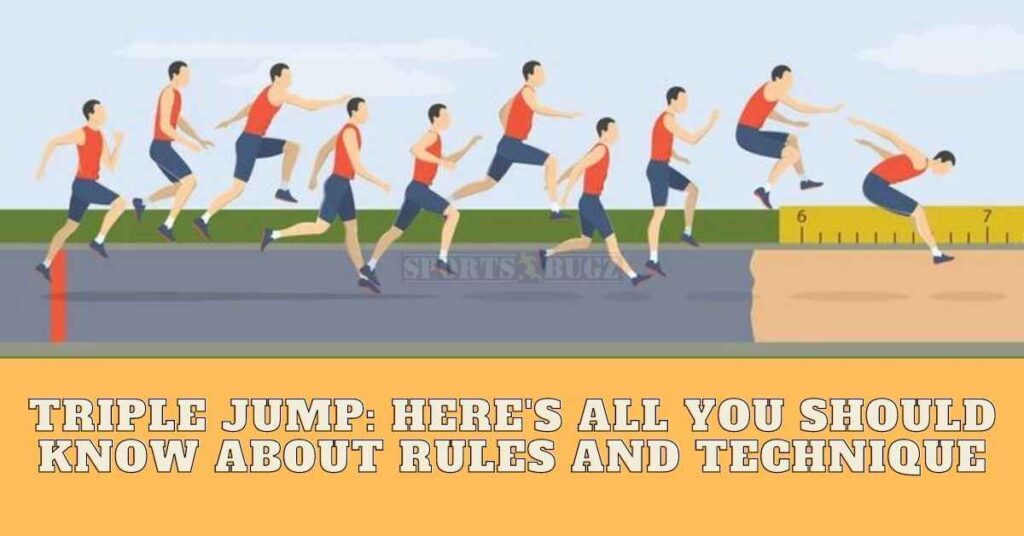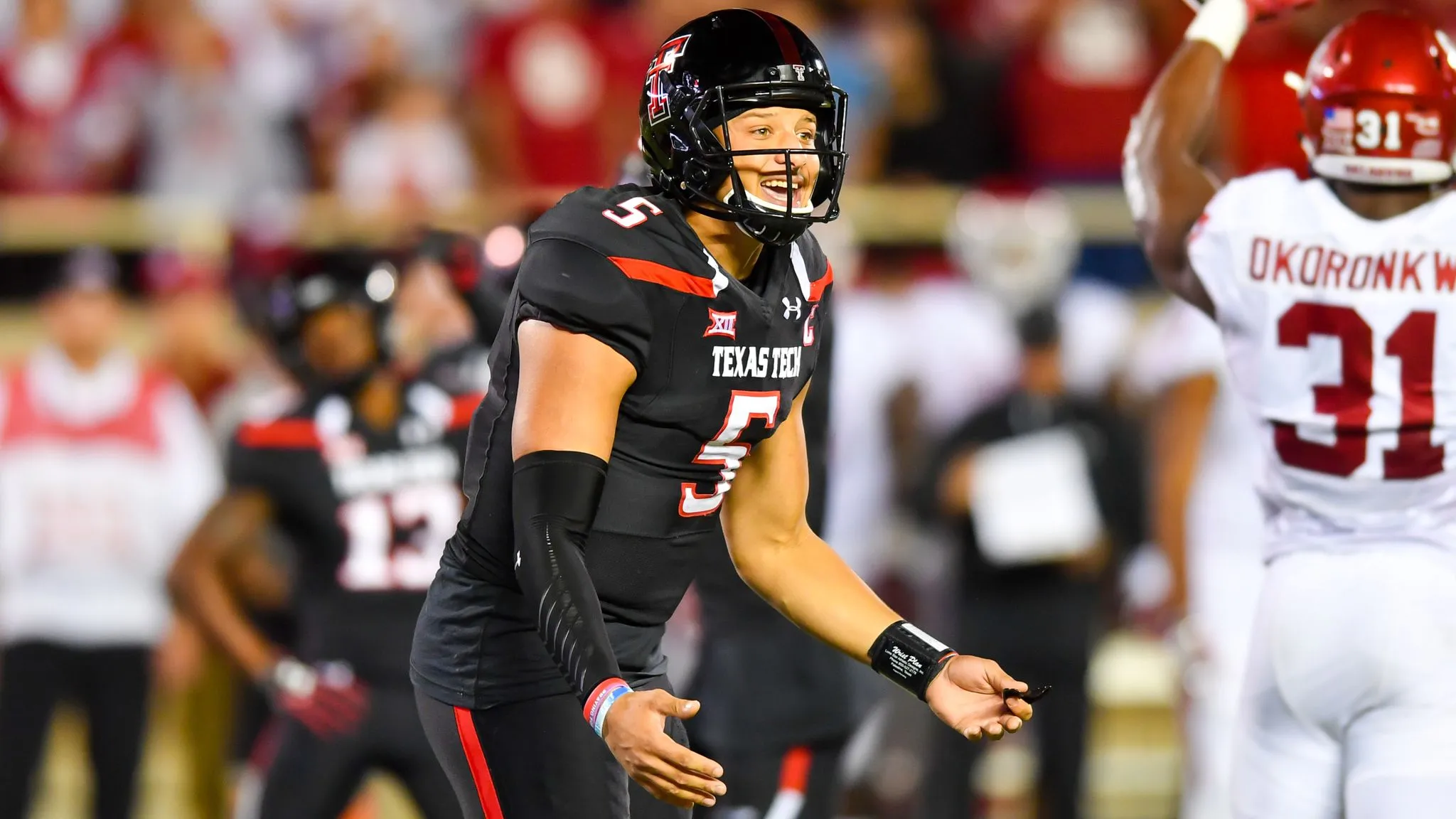Sports Education
Top 10 Richest Sports In The World 2023 – Surprising List!


Have You Ever Wondered about What are the Top 10 Richest Sports In The World in 2023? Well, if not, This article is going to be an eye-opener and knowledgeable for you. At a compound annual growth rate (CAGR) of 41.3 percent, the global sports industry is predicted to increase from $354.96 billion in 2021 to $501.43 billion in 2023.
The increase is primarily due to companies reorganizing their operations and recovering from the impact of COVID-19, which had previously resulted in restrictive containment measures such as social distancing, remote working, and the closure of commercial activities, all of which created operational challenges. At a CAGR of 9%, the market is estimated to reach $707.84 billion in 2026.
Sales of sports services and related goods by entities (organizations, sole traders, and partnerships) that provide live sporting events in front of a paying audience or entities that operate golf courses and country clubs, skiing facilities, marinas, fitness, and recreational sports centers, and bowling centers make up the sports market.
This Huge increase in the valuation of the Sports Industry is mainly contributed by the richest sport in 2023.The top 10 Among them are as follows:
Richest Sports In The World In 2023
Spectator sports and participant sports are the two most common sorts of sports. The presentation of sporting activities by teams and clubs, as well as individual sportsmen, is referred to as spectator sports. Media rights, merchandise, tickets, and sponsorship are among the several sources of revenue, and there are various ownership structures, including chained and freestanding.
1. Baseball

Baseball is the oldest of the United States and Canada’s four main professional sports leagues. Although it dates back to the 18th century, it was not until the twentieth century that it truly became America’s national sport. It grew into a major business as it grew. In 2018, the Major Leagues expanded from a handful of clubs in the early years to 30 teams—15 in the National League and 15 in the American League. Add to it the fact that there are over 250 minor league clubs, each with its own fan following.
The total income of all Major League Baseball teams in 2021 was $9.56 billion USD. The average revenue per MLB franchise was 318.53 million dollars in the United States.
Baseball, like other professional sports, has the potential to generate millions of dollars in revenue. But only if people keep an eye on it and continue to do so. That meant watching in person throughout the day at first, but as time passed, that changed, and with it came more fans, and with more fans came more cash.
Baseball was initially televised on the radio in 1921, followed by the first night game in 1935, the first games on television in 1948, and an increase in the number of games played every season. Additional money was generated via radio, then television, and finally cable, which has complemented the steady stream of cash from in-person attendance. The League has also gained money through licensing and other means.
2. Basketball

One Of The Best among the Top 10 Richest Sports In The World 2023. Basketball dates back to 1891, when James Naismith, a physical education professor and instructor who wanted to keep his gym class busy throughout the winter, came up with an indoor game to keep his students interested and maintain adequate levels of fitness. Basketball was formed when he penned a few simple rules and fastened a peach basket to a 10-foot raised track.
The NBA’s primary sources of revenue include broadcast, merchandise, sponsorships, and ticket sales. In the 2018-19 season, the NBA’s 30 franchises had an average worth of $2.12 billion per. The NBA earned $8.76 billion in revenue during the 2018-19 season.
Since its inception, when it was mostly linked with colleges and high schools, the sport has evolved. There were 17 teams in the National Basketball Association (NBA) when it was created, but that number had more than quadrupled to 38 by 2018: there was a professional women’s league, many colleges had both women’s and men’s teams, and it had grown into a major worldwide sport.
3. American Football

In the United States, American football is the most popular sport. The NFL generates the most money and has the largest average attendance of any sports league in the world. The game is commonly referred to as “football” in the United States.
The NFL employs a variety of revenue-sharing strategies. The two primary forms of income sources for NFL teams are retained revenues and shared revenues. 60 percent of stadium (gate) receipts for home games, naming rights, sponsorship, luxury suite revenue, concessions, and local broadcast rights are among the retained revenues, which are revenue produced and maintained by individual clubs. A few revenue-related points:
The profits of NFL clubs have benefited greatly from the construction of new stadiums and the sale of stadium naming rights. This trend has continued throughout the league, with 16 new stadiums being erected since 1990.
National broadcast rights payments, away game ticket sales, and licensing are the key sources of shared income in the NFL. The NFL announced a new media contract in December 2011 that would last until the 2023 season.
NFL Ventures, the league’s marketing arm, has also earned significant cash for the league. NFL Ventures is divided into several divisions: NFL Enterprises, which is primarily responsible for advertising, publicizing, and promoting NFL games; NFL Properties, which is in charge of licensing and sponsorship; NFL Productions, which produces NFL-related programming; and NFL International, which promotes the NFL internationally.
Despite its lengthy history, the NFL is now challenged by the player-free agency and the team pay cap structure. The pay cap is the consequence of revenue sharing between clubs and players in the league, which is based on a set gross revenue agreement (DGR). The league then allocates a portion of DGR to each franchise’s player roster. The salary cap is essentially a spending ceiling that is imposed evenly on all teams. In comparison to other professional sports that have used the wage cap system, the NFL has shown to be competent at balancing player compensation and the league’s growing running costs.
4. Ice Hockey

Because of the growing popularity of ice hockey in developed nations and the introduction of new market prospects in the Asia Pacific, the global ice hockey equipment market is expected to increase significantly.
Because of the huge number of participants in these areas, the ice hockey equipment market’s growth prospects are more consolidated in North America and Europe. This expansion is also due to shifting sports market trends and an increase in the number of ice hockey clubs and rinks.
According to a new Fact.MR report, that the ice hockey equipment market is predicted to grow at a CAGR of 6.4 percent over the next five years (2020-2030).
In the projection period of 2022 to 2029, the ice hockey equipment market is predicted to increase at a 4.60 percent annual pace, reaching USD 1,283.03 million in 2029. Ice hockey is one of the world’s fastest-growing sports, having a sizable fan base in North America and Europe.
5. Football or Soccer

Europe is the most important soccer market in the world in terms of income and overall level of competitiveness. Professional soccer in Europe had a market size of 25.2 billion US dollars in the 2019/20 soccer season.
Soccer is a sport that has a massive global following and continues to develop with an ever-increasing fan base. Professional soccer, often known as football in other parts of the world, is really a worldwide sport. According to estimates, there are over 240 million registered players globally, with billions of fans participating.
The Federation Internationale de Football Association (FIFA), which was created in 1904 and is made up of both men’s and women’s clubs from all over the world, is the worldwide regulatory body of soccer. It now has 205 member associations, with over 300,000 clubs and 240 million players. Every four years, FIFA’s member organizations elect a president who serves as the body’s legal representative and officiates at FIFA meetings.
FIFA began forming continental soccer (international football) confederations in 1954. The Union des Associations Europeennes de Football (UEFA), which has 25 member countries, was the first to be founded, followed by the Asian Football Confederation (AFC). Oceania Football Confederation was the final confederation to join FIFA, first in 1966 and then in 1996 as a fully sanctioned member.
Within each confederation, all member nations’ clubs compete for the World Cup, the championship trophy presented to the greatest soccer team in the world. There is both a Men’s and Women’s World Cup competition. FIFA is currently organized into six confederations, each of which has considerable autonomy in controlling the games of its member countries in accordance with FIFA laws and regulations.
6. Golf

There are many different indications and areas to examine when looking at the business of several sports. There is a professional component to golf, which consists of those who make a career from the sport and dominate the sports pages, and an amateur component, which is pretty much anyone who wants to play. Ticket sales, event attendance, sponsorship, and prize money are all sources of revenue for the professional side of the business. Individuals who desire to play golf may make money through local club courses, fees, and equipment sales.
Interest and participation in the game have fluctuated throughout its history, and are frequently linked to popular players and economic situations.
In 2019, the National Golf Foundation projected that the business was worth $84 billion. According to the survey, the global market for golf clubs and balls was worth $2.7 billion in 2018.
Professional golf revenues are determined by individual player performance on the tour, and tours are greatly influenced by weather and travel circumstances. Dustin Johnson, an American golfer, was the highest earner on the PGA tour in 2020, with $3.11 million in earnings at the time of the study.
According to the National Golf Foundation, green grass golf saw a net gain of 500,000 participants in 2020.
However, many individuals have stopped playing or put it on pause indefinitely as a result of the COVID-19 outbreak’s fear and financial hardship.
Despite population expansion, the number of green grass golfers has remained constant over the last 25 years. As a result, the number of people who play golf in the United States has decreased from 11% to 8%.
7. Cricket

When it comes to the Top 10 Richest Sports In The World 2023, Cricket is 7th in the list. Cricket has been played for hundreds of years, dating back to the 1500s. The International Cricket Council has 104 recognized members, making cricket one of the most popular sports on the planet.
With a change between 2021 and 2022, the Cricket market size will be USD million in 2022, up from USD 332.6 million in 2021. The cricket market size is expected to reach USD 378.6 million in 2028, with a CAGR of 1.9 percent during the forecast period. This report covers a thorough analysis of the Cricket market, including leading players, size, share, production data, regional analysis, and forecasts for the years 2022-2028.
Cricket, on the other hand, is the most profitable sport in India. The Indian Premier League, also known as the IPL, is a relatively recent competition. It is just in its eleventh season, yet it has already amassed more sponsorship revenue than Major League Baseball. The IPL earned $1 billion in sponsorship money in 2017, according to advertising media business GroupM. In 2017, the MLB earned $892 million in sponsorships, according to IEG, a sponsorship evaluation agency.
According to financial advice company Duff & Phelps, the IPL was valued at $5.3 billion in 2017. According to Duff & Phelps, the IPL’s worth has increased by 26% since 2016, owing to new media arrangements, the value of its title sponsor Vivo, and an increase in brand value for all of the clubs.
8. Boxing

In 2023, the Boxing Promoters sector will have a market size of $438.6 million dollars, as measured by revenue. In professional boxing, just the promoter’s sector made $348.4 million last year. Furthermore, the average yearly pay of a skilled professional boxer is approximately $50,000. Who can forget the Floyd Mayweather vs. Manny Pacquiao fight, which drew 4.6 million PPV Buys? Aside from that, the battle of the century brought approximately $410 million in income.
Operators in the Boxing Promoters sector plan and market boxing events for teams of athletes, taking on the majority of the risk associated with putting on a show.
As a result, the industry is very competitive, with promoters vying for the most skilled boxers through the most high-profile TV networks and entertainment venues. Because boxing promoters, who are usually self-employed, take on so much risk, a bad event might make it difficult for them to recruit future talent. Nonetheless, the business increased for most of the five-year period as customers continued to spend on discretionary products such as PPV events and athletic event tickets.
9. Tennis

In 2023, the worldwide tennis equipment market is predicted to be worth US$ 9 billion, rising at a CAGR of 2.9 percent to a net worth of US$ 10.8 billion by the end of 2029.
The global sales value of tennis equipment is expected to reach US$ 9 billion in 2022, according to a market analysis released by Future Market Insights. The Tennis Equipment Market is expected to grow at a CAGR of 2.9 percent over the forecast period, according to the report.
In 2023, racquets are predicted to account for the largest proportion of sales in the worldwide tennis equipment market. In recent years, rising female involvement in sports like tennis has complemented the global sports industry’s expansion, potentially expanding demand for sports equipment.
Because of the increased engagement of young and cardio tennis players in recent years, the number of individual buyers of tennis equipment is expected to expand at a quick rate. Additionally, manufacturers are on a roll, as lightweight racquets like the Head Graphene 360 Radical Lite racket continue to gain favor, allowing players to swing the ball quicker and produce more topspin.
Due to the availability of high-quality items at a cheap price, independent sports outlets are expected to be the main sales channel in the global tennis equipment market by 2023, hurting bigger rivals in the industry.
10. Auto Racing

With a compound annual growth rate (CAGR) of 7.2 percent between 2021 and 2026, the global market for Motorsport is expected to grow from US$4.8 billion in 2021 to US$7.8 billion in 2026.
Moto Racing, one of the report’s sectors, is expected to grow at a 9 percent compound annual growth rate (CAGR) and reach US$2.2 billion by the conclusion of the analysis period. Following an early assessment of the pandemic’s commercial ramifications and the resulting economic crisis, the Enclosed Wheel Racing segment’s growth is revised to a revised 6.5 percent CAGR for the following seven years.
The market in the United States is estimated to be worth $1.3 billion, while China is expected to grow at an annual rate of 11.1 percent.
In the year 2020, the US Motorsport market is expected to be worth $1.3 billion. China, the world’s second-biggest economy, is expected to reach a projected market size of US$1.7 billion by 2027, representing an 11.1 percent CAGR from 2020 to 2027. Japan and Canada are two more important geographic markets, with forecasted growth rates of 3.8 percent and 6.5 percent, respectively, from 2020 to 2027.
Germany is expected to expand at a CAGR of around 4.6 percent in Europe. This 7th edition of our study draws on years of research expertise. For 2020 and 2021, the 179-page study provides succinct insights into how the epidemic has impacted production and the purchasing side. In addition, a short-term staged recovery per important geography is discussed.
Conclusion
There are many other sports in the world that are valued so much and have huge viewership around the World but these are the Top 10 Richest Sports In The World in 2023.
If you would like to Add Next Three Sports After these Top 10 Richest Sports, What would those Sports Be? Let us know in the comments section below.
FAQs Regarding Richest Sports In The World
Who is the richest in sport in the world?
The total income of all Major League Baseball teams in 2021 was $9.56 billion USD. The average revenue per MLB franchise was 318.53 million dollars in the United States.
What Sport Brings in the Most Money?
National Football League (NFL) and Baseball Sports Industry bring the Most Money and its net worth is among the richest in sports in the world.
What is the No. 1 Sport in the world?
While it may not be obvious in the United States, association football (commonly known as soccer) is by far the most popular sport on the planet. In almost all of Europe, South America, Africa, the Middle East, Central America, and Asia, soccer reigns supreme.
Sports Education
Top 10 Highest Paying Sports in the World (2024)

There are various criteria to use when deciding which sport is the most paid in the globe. Sports like boxing, basketball, and soccer attract the highest-paid athletes in the world. However, rather than looking at individual salaries, it is important to look at the best-paid professional sport as a whole in order to provide an answer to this question. (more…)
Sports Education
Top 10 Best Horse Polo Players in The World in 2024
World’s Top 10 Horse Polo Players: The United States Polo Association turns 100 years old this year. Finally, an all-star game featuring Hall of Fame-caliber athletes. Two teams will compete in the Polo Master of the Masters.
Top 10 Best Horse Polo Players in The World in 2024
1. Adolfo Cambiaso

Adolfo Cambiaso is a ten-goal handicapped competitive polo player from Argentina. Adolfo Cambiaso is the player currently ranked top. Adolfo Cambiaso was born on April 15, 1975, in Cauelas, Buenos Aires Province.
He plays polo and has a 10-goal handicap. He is currently ranked first and is usually considered as the world’s best polo player. He goes by the names Adolfito or Dolfi as well.
2. Carlos Gracida
Carlos Gracida, a 1960 birth year, started playing in competitions at the age of 14 and advanced to a 10-goal handicap in 1985, which he maintained for 15 years.
He was a dominant force, winning the USPA Gold Cup® in 1980, the Silver Cup in 1980 and 1981, the 1998 Monty Waterbury Cup, the World, North American, Chairman’s, Inter-Circuit, and the U.S. Open Polo Championship in 1982, 1984, 1985, 1987, 1988, 1991, 1992, 1994, and 2003.
He also won the C.V. Whitney Cup in 1997, 2001, and 2004. He also had a strong international track reco8. Pelayo Berazadird, having triumphed in competitions in Argentina, Mexico, France, England, and France.
3. Guillermo Caset jr.

He was born in Argentina and plays polo. His handicap is 6. His accomplishments include the Camara de Diputados, US Open, USPA Gold Cup, and Indian Empire Shield.
4. Facundo Pieres
The second son of legendary polo player Gonzalo Pieres Sn and Cecilia Rodriguez Piola, Facundo Pieres Sn, was born into a polo family.
Professional polo players Tatiana Pieres, Gonzalo Pieres, Nicolas Pieres, and Cecilia Pieres are his siblings. Professional polo player Facundo Pieres from Argentina has a 10-goal handicap.
5. Mike Azzaro

Mike Azzaro is a professional American polo player from San Antonio, Texas. So Mike now has six goals, although his biggest handicap of the game used to be ten goals.
Azzaro received the Polo Magazine Polo Excellence Award for Young Player of the Year in 1987 and 1990, as well as the Player of the Year award in 1994.
6. Luke Tomlinson
In fact, Luke Tomlinson plays polo professionally. A former captain of the England polo team, he had an eight-goal handicap in Argentina and a seven-goal handicap in the UK.
Tomlinson, who co-owns the Beaufort Polo Club with his family, was raised in Gloucestershire by polo players and later attended Trinity College in Cambridge and Eton. He does have a younger sister and brother that play polo professionally abroad.
7. Juan-Martín Nero

Juan is an Argentine polo player with a handicap of 10. So among the top players of 2017 polo, he is considered as the third place player. In 2001, he won the Gold Cup Deauville and the Gold Cup Sotogrande.
His other achievements include the Cartier Polo World Cup, Gold Cup, Queen’s Cup and CV Whitney Cup on Snow. He earned the USPA Gold Cup in 2009.
8. Gonzalo Pieres Jr.
Gonzalo Pieres, Jr., an Argentine polo player with a ten-goal handicap, was born on December 17, 1982, in Buenos Aires, Buenos Aires Province. Gonzalo Pieres Jr. is now recognised as the second-best player.
9. Pelayo Berazadi

Since 1939, Pelayo has been regarded as the top Polo player in the UK. He claims that because polo is less well-liked in the UK than it is in Argentina and the United States of America, the country has not been able to create good polo players.
10. Corinne Ricard
The Murus Sanctus polo squad is sponsored by amateur player Corinne Ricard. She is one of the few women that play for an all-male professional squad.
One of the most well-known female polo players in the world, she has contributed significantly to the growth of women’s polo.
Sports Education
Triple Jump: All You Should Know About Rules And Technique

The triple jump, commonly referred to as the hop, step, and leap, is a track and field competition. Together, the long jump and triple jump are known to as “Horizontal Jumps.” In this competition, competitors run down a runway before jumping from the take-off board, landing on their takeoff foot, then taking a stride with their other foot before jumping into the sandpit.
According to the historical accounts of the ancient Olympic Games, there were sometimes fifteen-meter or longer leaps. The sports historians came to the conclusion that there must have been a succession of leaps that served as the foundation for the triple jump as a result of this.

Furthermore, there is no confirmed proof that the event was part of the ancient Olympics, with the exception of the writers of the triumph songs who described some of the elements of it.
Triple Jump (Athletic Game) History
In 1896 in Athens, Greece, the triple jump was a competition in the first modern Olympics. Despite the fact that at the time, the event included two hops with the same foot before a leap. But in 1908, the new hop, skip, and jump format became adopted.
James Connolly, an American athlete and author, won the triple jump competition to become the first modern Olympic champion. Later in 1996, the Atlanta Olympic Games included the women’s triple jump event. In 2004 in Athens, Greece, Francoise Mbango won the gold and made history by being the first female athlete from Cameroon to take home an Olympic medal.
Between 1968 and 1976, the Soviet Union’s Viktor Saneyev won three consecutive Olympic gold medals in the men’s triple jump, while the United States’ Christian Taylor won gold in 2012 and 2016.
Triple Jump Rules
The International Association for Athletics Federations (“IAAF“) is the authority for developing and enforcing the triple jump rules & regulations.
- An approach run, a hop, a stride, and a leap make up the triple jump. A foul is committed if the athlete misses any of them.
- The athlete can leap from the take-off board or behind it but cannot jump beyond it.
- If an athlete hits the ground beyond the take-off board during their leap, it is a foul.
- A foul is committed if the player returns through the landing area.
- The distance should be calculated from the takeoff point to the heels’ backs or the closest point to the sand (that is the impression made on the sand).
- Even so, it is ruled a foul if the takeoff occurs while touching the red plasticine board.
- In the event of a foul, the judges shall display a red flag, and in the event of a right leap, a white flag.
- A bad leap counts as an attempt as well.
These are some of the general and compulsory rules to be followed in the athletic game of Triple Jump.
Triple Jump Rules Technique
The way a triple jumper moves is quite similar to how a small kid plays hop scotch. Before landing in the pit, an athlete must launch, land on the same leg, then land on the next opposite leg. Many of the traits that the long jump exhibits throughout the approach are also present in this event.
Good triple jumpers will launch at a far flatter angle than in the long jump, but that is where the similarities stop. We’ll look at the technical specifications, how to build them, how to set up the training week and day.
In the triple jump, there are two Highest Allowable Speed No. 3 Takeoff and the Hop The fourth step, the fifth jump, and the landing.
Increased Speed And Maximum Controllable Acceleration
By focusing on technique and strength, one may swiftly accelerate (starting and explosive). In the triple jump technique, 2 or 3 right/left steps or 4-6 total steps are needed to reach the top speed.
Your athletes will reach peak speed more quickly the slower they are. Your quicker athletes will need more time to reach their top pace.
The subsequent stages are carried out as quickly as is manageable. Success depends on maintaining this pace and an erect stance at the finish of the approach.
Drills for Acceleration
Series on Wall
- Place your athlete in the starting position with their hands up against a wall or fence and their body leaning 45 degrees from one leg up. Adapt them as necessary. Ask them to “feel” a straight line connecting their head, shoulders, hips, knees, and feet. Continue the exercise without lining up the athlete.
- Starting in position A, have the athlete take three to five steps in place (walking, marching, and then running), paying attention to where their feet land. Observe and cue the straight line repeatedly from head to toe.
- Have the athlete continue the exercise while staying in alignment and progressively erecting himself with each foot contact until they are standing.
Series Partners
- Have the athlete start in the same leaning position while being supported at the shoulders by a partner’s hands.
- Perform a five-step start, starting with a march and working up to a push.
- Repetition of the whole effort began, but at the fifth step, the partner will stand aside to enable the athlete to keep going faster.
- The athlete is free to accelerate on their own after establishing the proper lean on the partner. This set of exercises may also be performed while using a towel, belt, or harness as rear resistance.
The Rocking Start Technique
Starting with their takeoff foot in front, the athlete will then rock back until most of their weight is on the back leg. When they push out of this posture and “rock” back over their front leg, make sure they swing their arms counterclockwise to the swing of their legs.
The earth should be struck horizontally by all forces. The athlete may utilise the momentum created by the rock to help with the start if they begin in this way. It contributes to ensuring a solid, consistent start that results in an accurate approach.
Cues for Coaching Acceleration Work
Push while slanting your ankle. Tell the athlete to take their time as they carry out this step of the approach, letting the sensation of their feet touching the earth help them rise up.
Highest Speed
This trait has been covered in a lot of literature. Running exercises, sprints of varying lengths and intensities, hill running, over speed towing, approaches with or without a takeoff, and other advanced techniques may all be used to improve speed.
The maintaining of posture and pelvic position through to the finish of the approach are the crucial components of speed as they apply to leaps.
Taking Off and HOPing
While rookie athletes survive the landing from their long jump like launch, elite athletes build up the takeoff and initial phase (hop). The majority of newcomers in the triple jump will require persuasion that going through the board is more significant than takeoff height.
With the exception of the heel-to-toe (rocking) ground contact, there shouldn’t be any obvious differences between takeoff and the earlier parts of the approach. It’s a terrific cue to try to rush past the foot when it’s on the board.
The takeoff motion places a strong focus on horizontal movement. Instead of actively “cycling,” let the stretch in the hip flexors prepare the takeoff leg for the step. It is easier to shift to a slower leaping pace by not cycling the leg.
Coaching the free limbs may be fairly complicated, but the simplest advice is to keep them moving as closely to running as you can. Generally speaking, the hop will be the longest of the three stages. It should most crucially establish the step and maintain horizontal motion.
Drills for Takeoff and HOP
Series of Standing Triple Jumps
- Two-legged start – the athlete should begin as though doing a standing long jump. Have the hop foot start the triple jump motion (RRL or LLR) into the pit before you land.
- Takeoff foot start – similar to previous drills, but with the first step forward (takeoff foot) (RRL or LLR).
- Take one more step back when you start walking than you did in step B. (takeoff foot is moving or walking into the jump). Increase the walk-stairs. in’s
3- To 5-Step Approach, hop, and kneel in the pit
This exercise prepares the athlete to maintain the takeoff posture (initially). Swing leg will come forward during landing and departure leg will come back (lunge position).
The takeoff leg is then moved into position for the step’s landing. The takeoff leg will come down first, followed by the swing leg.
Approaches, short and full, with and without a hop
Both full and short approaches may be used for run throughs without a takeoff. In order to avoid having athletes land on the runway, do any hops from the closest board to the pit. Spikes should be used for these.
The Move
The most crucial thing is to get athletes in position for the step. By concentrating on the approach and hop, most of this is accomplished. It takes some preparation to get the athlete ready for this critical change.
The general coaching advice is to keep your horizontal speed up and to remain patient (wait for the ground to come to you). The rocking full foot contact mentioned in the previous steps is the greatest way to make contact.
Drilling steps
In Position Series
- Hop with one leg extended fully as you make contact with the ground.
- After fully extending into the ground, the athlete will then kick their butt.
- The performer will then kick their butt and bend their knee.
- Lastly, they will start to advance about one foot at a time. Athletes need to study this remedial series to be ready for the pressures they will experience on a complete leap, even though stretch reflexes will eventually set up a large portion of this sequence.
Run and Walk in Bounding Series
Utilize any Right and Left combination when walking or making short approaches. Favorite movements include LLLLR, LLLR, and LLRR (for left foot takeoff).
Small boxes (6-18″) may be utilised at various points in the sequence to test the athlete, depending on the quality of athletes you have.
Jumps from a short distance with a knee landing
Perform the hop and step with a knee landing and a very short approach with the right foot front and the left knee back (for left foot takeoff). Athletes should run as swiftly as they can from that distance while doing any short approach practise.
Make a point of standing up straight as soon as possible so that posture exercises are reinforced. Prior to takeoff, no chopped or extended steps should be employed.
The Leap
The athlete has slowed down significantly at this stage of the leap. The jump’s success depends on the body making touch with the ground below it. As a result, the athlete may continue to apply forces horizontally and decrease deceleration. The majority of leap phase practise will be combined with other phase activities.
If this area is isolated, the athlete could prepare for a takeoff similar to a long jump. The athlete may get a sense of what will happen during this phase by doing a few “weak leg” long leaps.
After some step practise, further single-leg hopping is a fantastic approach for the athlete to align themselves during this phase. An example would be a left foot takeoff, such as LLRRR or LLRR.
Triple Jump Track/Field

A triple jump track is made out of a runway path, a starting line marker, and a sand pit that is 14 feet from the takeoff line. Athletes race towards the takeoff point before performing the hop, step, and leap motions sequentially. The proper foot sequence must be used to execute all three components of the triple jump. The initial leap should be landed with the same foot that was used for takeoff. The third leap must be landed with both feet together, while the second jump must land on the opposite foot.
The leap is ruled invalid if the athlete fails the foot sequence or goes beyond the takeoff mark. Each athlete is given six tries, and the winner is the one who jumps the furthest.
Olympic triple jump competitions are held for both men and women. Competitions for the triple jump are held at all major sports events, including world championships.
Triple Jump Measurement

The closer edge of the landing area in the triple jump must be at least 36 feet (11 metres) away from the foul line for men and 27.89 feet (8.5 metres) away from the foul line for women. It is advised to keep a distance of 32 feet (10 metres) and 26 feet (8 metres), respectively.
Triple Jump World Record
With 15.67 metres, Yulimar Rojas owns the triple jump world record. Yulimar Rojas of Venezuela finally broke the world record set in 1995 by the Ukrainian Inessa Kravets with a huge, last-ditch jump of 15.67 metres to win the Olympic gold.
-

 Sportsperson3 years ago
Sportsperson3 years agoPatrick Mahomes: Diabetes, Whats on Arm, Left arm Bump, Grim Reaper
-

 Sports Education3 years ago
Sports Education3 years agoDarts Player Michael Smith: Tattoo Meaning, Hair Beard Natural, Kids, Parents
-

 Jockey3 years ago
Jockey3 years agoMeet Jamie Kah Ben Melham Relationship, Partner, Husband, Wife, More
-

 Sports Drink3 years ago
Sports Drink3 years agoPrime Drink Net Worth 2023, Revenue Company, Price & Value
-

 Sportsperson3 years ago
Sportsperson3 years agoJimmy Hayes: Cause Of Death, Autopsy, Wife, Family, Net Worth
-

 Sportsperson3 years ago
Sportsperson3 years agoCody Rhodes: Theme Song, Kingdom Lyrics, Entrance, Kingdom WWE
-

 Top-Stories3 years ago
Top-Stories3 years agoHow Did Shawn Rhoden Die? Cause Of Death & What Happened
-

 Football3 years ago
Football3 years agoErling Haaland Religion: Father, Net Worth, Salary, Bio
